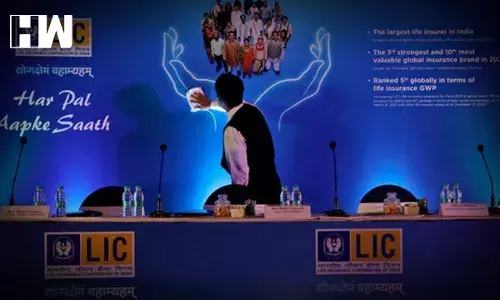On Tuesday, India’s largest-ever IPO, state-owned insurance giant Life Insurance Corporation (LIC), launched its shares on the BSE and NSE at a discount of more than 8%.
Indeed, LIC began trading on the BSE at ₹ 867.20 per share, down 8.62 percent from its huge initial public offering (IPO) allotted price of ₹ 949.
As of 10.25 a.m. Indian Standard Time, the insurance behemoth’s shares were trading at ₹ 904, up over 4% from their listing price and over 5% below their issue price (IST).
The NSE’s listing price for LIC was $872, representing an 8.11 percent decrease from the issue price. The stock was last trading at about ₹ 914 on the NSE, down nearly 3.5 percent.
“Though LIC listing has been below the issue price of ₹ 949, given the attractive valuations and stability in the markets, we expect some buying interest in the stock both from retail and intuitional investors,” said Hemang Jani, Head of Equity Strategy, Broking and Distribution, at Motilal Oswal Financial Services.
Since large amount of money has been released post listing of LIC, part of this money could get diverted into equity markets,” he added.
Stagflation fears have recently roiled financial markets, as global central banks prepare to boost interest rates aggressively to confront multi-decade high inflation.
Foreign capital outflows, fueled by the dollar’s attraction and a general surge in flight-to-safety trades, have hammered emerging market assets.
Stagflation fears have recently roiled financial markets, as global central banks prepare to boost interest rates aggressively to confront multi-decade high inflation.
Foreign capital outflows, fueled by the dollar’s attraction and a general surge in flight-to-safety trades, have hammered emerging market assets.
LIC’s IPO received a huge response despite the severe swings in global financial markets. The sale was approximately three times oversubscribed, with policyholders bidding for over six times the number of shares available.
Indeed, India’s largest public offering to date — concluded with about three times subscription, primarily from individual and institutional investors, although international investor involvement was limited.
Due to market volatility, the IPO was postponed until March and was reduced by a third of its initial target plan due to low demand.
On Tuesday, Indian equities benchmarks rose for the second straight day, while the rupee fell to an all-time low. After a successful initial public offering that netted the government $20,557 crore, LIC set the issue price of its shares at $949 a share.
After taking into account the reduction, LIC policyholders and retail investors were able to purchase the shares for $889 and $904, respectively.
Through the IPO, the government sold approximately 22.13 crore shares, or 3.5 percent of LIC, achieving a third of its initial aim. The issue’s price range was 902-949 per share. On May 12, however, investors were given shares at the top of the price band.
As an independent media platform, we do not take advertisements from governments and corporate houses. It is you, our readers, who have supported us on our journey to do honest and unbiased journalism. Please contribute, so that we can continue to do the same in future.

